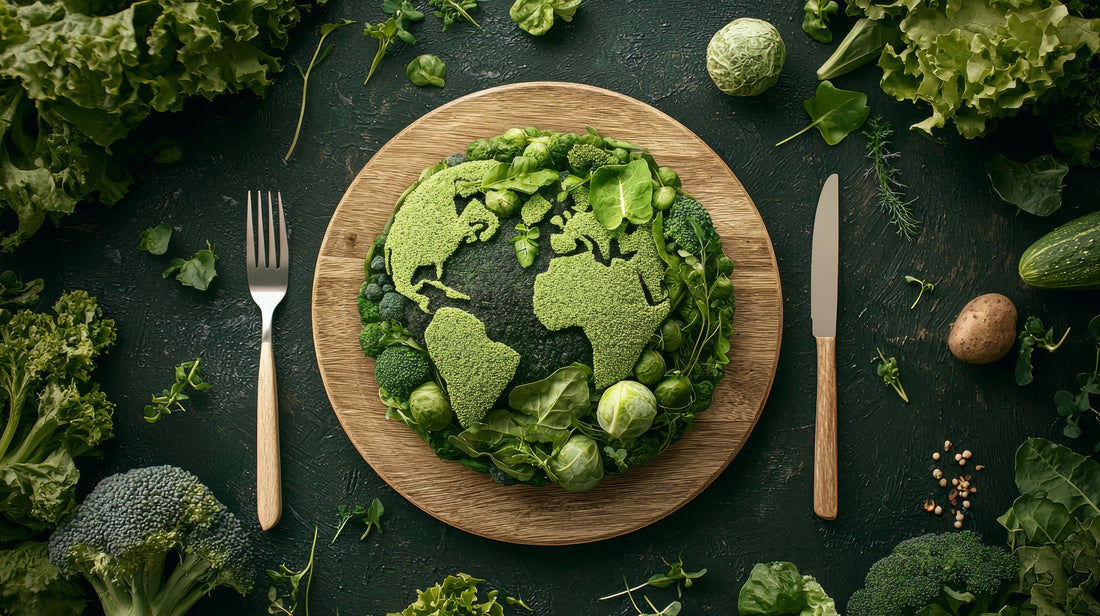Planetary nutrition – what is it and what are its principles?
Contents:
- Planetary Diet – What is it?
- See what assumptions accompany planetary nutrition
- Planetary diet – what should you eat and what should you avoid?
- It makes sense to follow a planetary diet
What we eat is important not only for our health, but also for the future of the planet. It's important to remember that food production often has negative environmental impacts—it consumes excessive amounts of water and energy and contributes to greenhouse gas emissions. Therefore, more and more people are seeking solutions with a sense of responsibility that can reduce the burden on the planet. It's not without reason that the planetary diet, a kind of result of concern for our bodies and nature, is enjoying increasing popularity.
Can changing eating habits help the environment? What exactly is the Planetary Diet and what benefits does it offer? In this article, we present the assumptions and make suggestions for implementation.
Planetary Diet – What is it?
The planetary diet, often aptly referred to as a diet for the planet, is a way of eating that combines concern for health with concern for the ecosystem. The goal is to provide valuable nutrients while limiting negative impacts on the environment.
The assumptions of this diet were developed by the EAT-Lancet Commission, which consists of experts from 16 countries. The results of their study were published in the renowned medical journal The Lancet on January 16, 2019. The authors emphasize that a modified diet could help feed the growing world population and reduce the environmental destruction caused by food production.
See what assumptions accompany planetary nutrition
Food production has a huge impact on our planet. It covers up to 40% of the Earth's surface and consumes 70% of its freshwater. Intensive agriculture leads to deforestation, biodiversity loss, and the depletion of natural resources. Furthermore, food production is responsible for 25 percent of global greenhouse gas emissions, more than half of which are attributable to livestock farming, including methane production and land-use changes.
According to the FAO, the goal of sustainable agriculture is to provide high-quality food for all while managing natural resources in a way that meets the needs of future generations. To reduce our impact on the environment, dietary changes such as those introduced by the Planetary Diet are necessary. The report, prepared by the EAT-Lancet Commission, emphasizes that the current model of food production is leading to ecological catastrophe and threatening climate stability.
For an environmentally friendly diet, it is crucial to limit the consumption of animal products, especially beef, which has the highest carbon footprint. Reducing red meat consumption, including processed meat, can also have a positive impact on health and reduce the risk of heart disease, diabetes, and cancer. The EAT-Lancet experts propose a dietary model that reduces the negative impact on the environment while improving health, preventing approximately 11 million deaths annually.
Alternatives to red meat include plant-based protein sources such as soy, beans, lentils, and tofu . Combining these products with whole grains provides all essential amino acids. Pork, poultry, and fish have less impact on the climate than beef and also provide important nutrients. By choosing a balanced diet, you contribute to protecting your health and the environment.
Planetary diet – what should you eat and what should you avoid?
According to the EAT-Lancet Commission, half of our planet’s diet should consist of the following components:
• fresh fruit,
• Vegetables,
• Nuts .
The second part consists of:
• Whole grain cereal products,
• Legumes (e.g. lentils, chickpeas, beans, peas),
• unrefined oils,
• starchy vegetables (e.g. potatoes, sweet potatoes),
• small amounts of animal protein, including dairy products (milk, yogurt).
It's worth using seasonal and regional products. This reduces your carbon footprint. A good solution is freezing fruits and vegetables. This way, you can enjoy their benefits all year round without having to import products from distant countries.
In the planetary diet you should limit the following:
• Meat and meat products,
• highly processed products,
• Sugar.
It makes sense to follow a planetary diet
Current food production practices have a negative impact on people and the planet. The Western diet contributes to environmental imbalance and a general decline in health. Industrial agriculture emits excessive amounts of carbon dioxide, accelerating global warming and destabilizing the climate, leading to ecological threats. Industrial animal farming consumes enormous amounts of water, and water resources are becoming increasingly scarce.
Animal-based food production requires significantly more water resources and space than plant-based food production. Another problem is the increasing use of feed crops. The Planetary Diet aims to help reduce these negative environmental impacts.
A change in diet can also help combat overweight and obesity. By applying the principles of the Planetary Diet, you can improve your body weight and reduce the risk of diet-related diseases. The diet plan is based on unprocessed products that provide a longer-lasting feeling of satiety and thus aid weight loss. However, it is important to adapt it to individual needs, taking into account gender, age, physical activity, and health status.
THE PUBLISHER'S CHOICE
Dried plums 1 kg BIOGO
- £6.06
- £6.06
- Unit price
- / per
Dried White Mulberries 500 g ORGANIC
- £5.05
- £5.05
- Unit price
- / per
Almonds 1 kg BIOGO
- £10.11
- £10.11
- Unit price
- / per
Cranberries sweetened with apple juice organic 1 kg BIOGO
- £14.16
- £14.16
- Unit price
- / per
Dried dates 1 kg BIOGO
- £3.64
- £3.64
- Unit price
- / per
Unpeeled buckwheat groats 1 kg BIOGO
- £2.43
- £2.43
- Unit price
- / per
Walnuts 800 g BIOGO
- £7.48
- £7.48
- Unit price
- / per
Peeled sunflower seeds 1 kg BIOGO
- £2.63
- £2.63
- Unit price
- / per
PULLED ORGANIC SUNFLOWER SEEDS 1 KG BIOGO
- £3.84
- £3.84
- Unit price
- / per












































































































































